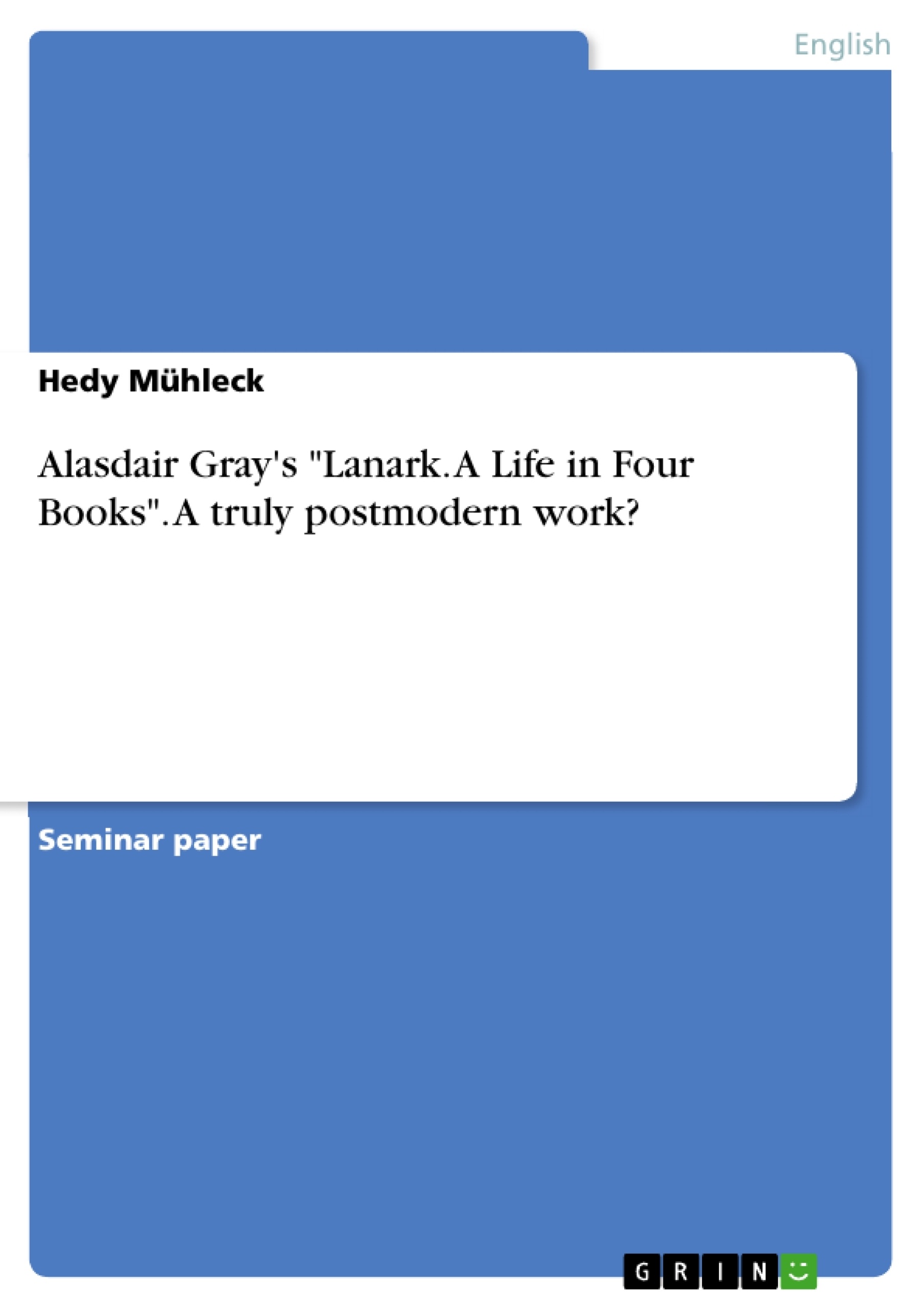This paper aims to show how Alasdair Gray's famous first novel Lanark fits the postmodern label. Although Alasdair Gray has often been considered the postmodern Scottish writer par excellence, he does not necessarily fit that description, nor does he intend to fit it. In this paper, I will try to show how his famous "Lanark. A Life in Four Books" lives up to a postmodern label, and where it differentiates from it.
For this purpose, I will begin with an outline of the concept of postmodern, paying special attention to developments in Great Britain. This outline can by no means provide a definition and shall only serve as defining guideline, to which I will then compare the most striking aspects of "Lanark" after giving a brief overview of its structure and the progress of its development.
Inhaltsverzeichnis (Table of Contents)
- Introduction
- Postmodernism - An Outline
- Metafiction
- Typography
- Intertextuality and Intermediality
- Lanark
- Concluding Summary
Zielsetzung und Themenschwerpunkte (Objectives and Key Themes)
This paper aims to examine Alasdair Gray’s novel Lanark: A Life in Four Books and explore whether it can be classified as a postmodern work. To achieve this, the paper will provide an outline of the concept of postmodernism, focusing on developments in Great Britain. Subsequently, it will analyze specific aspects of Lanark, comparing them to the outlined postmodern characteristics. The analysis will encompass the novel’s unique structure, development, and striking features, ultimately leading to a conclusion regarding its postmodern attributes.
- Postmodernism in British Literature
- Metafiction and Self-Referentiality
- Intertextuality and the Reader's Expectations
- Typography and Presentation as Defamiliarization
- The Role of Discourse in Postmodern Fiction
Zusammenfassung der Kapitel (Chapter Summaries)
The introduction provides an overview of Alasdair Gray’s life and works, emphasizing his significant contributions to Scottish literature. It also highlights existing research on Gray's work, focusing on Lanark and its postmodern elements. The introduction sets the stage for the paper's primary objective: to examine Lanark through the lens of postmodernism.
Chapter 2 delves into the concept of postmodernism, offering a general understanding of the movement and its key characteristics. It differentiates postmodernism from modernism and explores the ways in which postmodern literature deviates from traditional literary conventions. This chapter lays the groundwork for the analysis of Lanark by establishing a framework for understanding postmodern literary techniques.
Chapter 3 focuses on the specific elements of Lanark that contribute to its postmodern nature. The chapter explores concepts such as metafiction, intertextuality, and typography, analyzing how these elements contribute to the novel's unique structure and style.
Schlüsselwörter (Keywords)
This paper explores the concept of postmodernism in the context of Alasdair Gray’s Lanark: A Life in Four Books. It delves into key postmodern characteristics such as metafiction, intertextuality, typography, and defamiliarization. The analysis focuses on the novel's unique structure, style, and presentation, examining how these elements contribute to its overall postmodern quality.
- Arbeit zitieren
- Hedy Mühleck (Autor:in), 2011, Alasdair Gray's "Lanark. A Life in Four Books". A truly postmodern work?, München, GRIN Verlag, https://www.grin.com/document/520825



